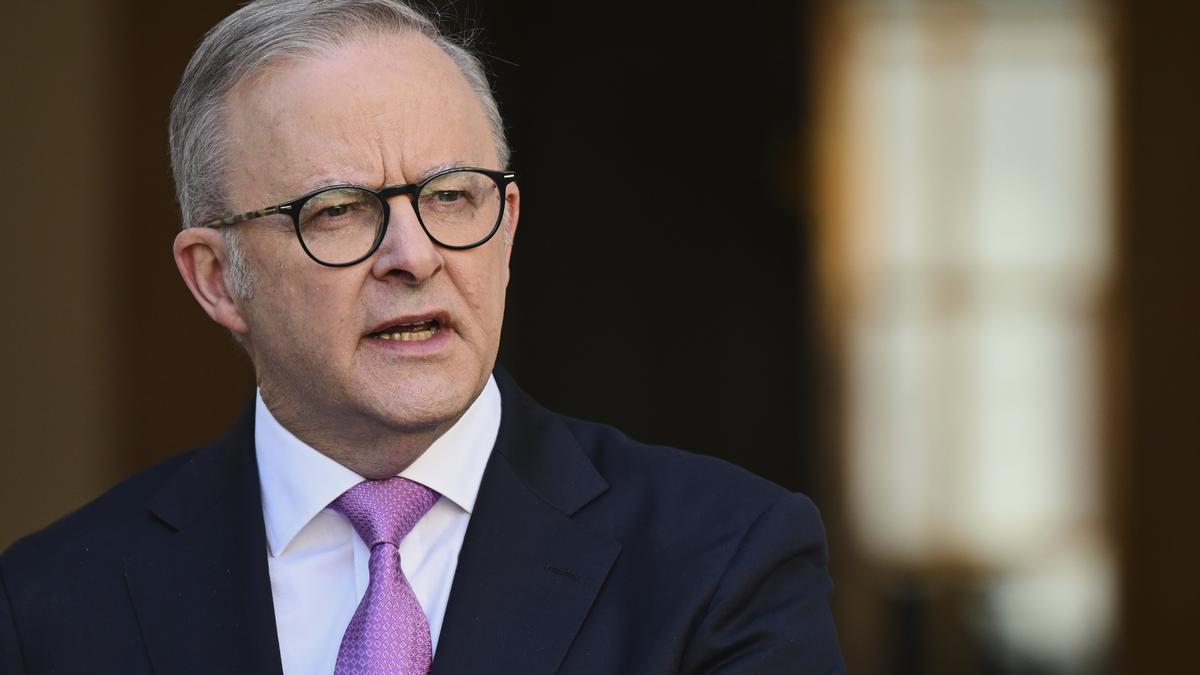The Australian election is over, and the centre-left Labor Party has been re-elected. Prime Minister Anthony Albanese becomes the first Australian leader in over two decades to secure a second term. As of May 7, with 80% of votes counted and results confirmed in 138 of 150 seats, the outcome is clear: Labor has won 88 seats, comfortably crossing the 76-seat threshold needed to form a government. The centre-right Liberal-National coalition fared poorly, winning just 40 seats.
Interestingly, much like in Canada, Donald Trump’s return to the U.S. presidency appears to have influenced the Australian election as well. Toward the end of 2023, voter sentiment in Australia began shifting in favour of the Liberal-National coalition, with support for the Labor Party steadily declining.
Chart 1 shows Australian voting intentions based on opinion polls conducted from 2022 through the election month.
The gap between the two major parties narrowed sharply after Mr. Trump’s return to the White House was confirmed in February. Notably, there are striking parallels in how Canada’s Conservative leader, Pierre Poilievre, and Australia’s Opposition leader Peter Dutton were perceived — both were viewed as Trump-like figures, a comparison that appeared to work against them.
Mr. Albanese has stated that passing legislation to reduce student debt is his top priority. The Labor Party has promised to cut student debt by 20%.
Chart 2 shows the number of students who have accessed the Higher Education Loan Program (HELP) in millions and the total outstanding debt in billion Australian dollars (AUD).
As of 2023–24, nearly 3 million Australians held HELP debt, with the total amount exceeding 80 billion AUD. Alarmingly, around 330,000 of these debtors are over the age of 50 — highlighting the long-term burden of student loans.
Affordable housing is becoming increasingly scarce in Australia, with the government identifying the sharp rise in immigration, particularly among international students, as a key driver of the crisis. In response, it has moved to curb student inflows, which surged well beyond the number of skilled migrants and other visa categories.
According to government data, 60% of international students live in apartments, 26% in detached houses, and the rest in hostels or university accommodation. When viewed alongside the record number of student arrivals in 2023, these figures help explain the mounting housing pressure, especially in Sydney and Melbourne.
Chart 3 shows the Rental Affordability Index in Adelaide, Brisbane, Hobart, Melbourne, Perth, Sydney, and the Australian Capital Territory.
A higher index indicates better affordability. In all cities, rent affordability has sharply declined, with the drop far steeper in Sydney, mirroring the surge in student migration.
The Labor Party has pledged 10 billion AUD to build up to 100,000 new homes. It has also promised to help first-time buyers enter the property market by allowing them to purchase homes with just a 5% deposit.
While the Labor Party has outlined clear policies on livelihood issues, it — such as the Liberal-National coalition — has remained silent on coal exports, despite mounting pressure to reduce them.
Chart 4 shows the export of bituminous coal by various companies in the 2013 to 2024 period.
As the chart shows, over the past decade, Australia has been the world’s largest exporter of bituminous coal, far surpassing the second-ranked U.S. Although exports have declined slightly over the last two years, Labor’s non-committal stance leaves the question of whether its second term will bring any shift in the coal export policy.
Source: housingdata.gov.au, data.gov.au, UN Comtrade
Also read: Australian visa denials for Indian students linked to document fraud, not housing crisis
Published – May 10, 2025 08:00 am IST
